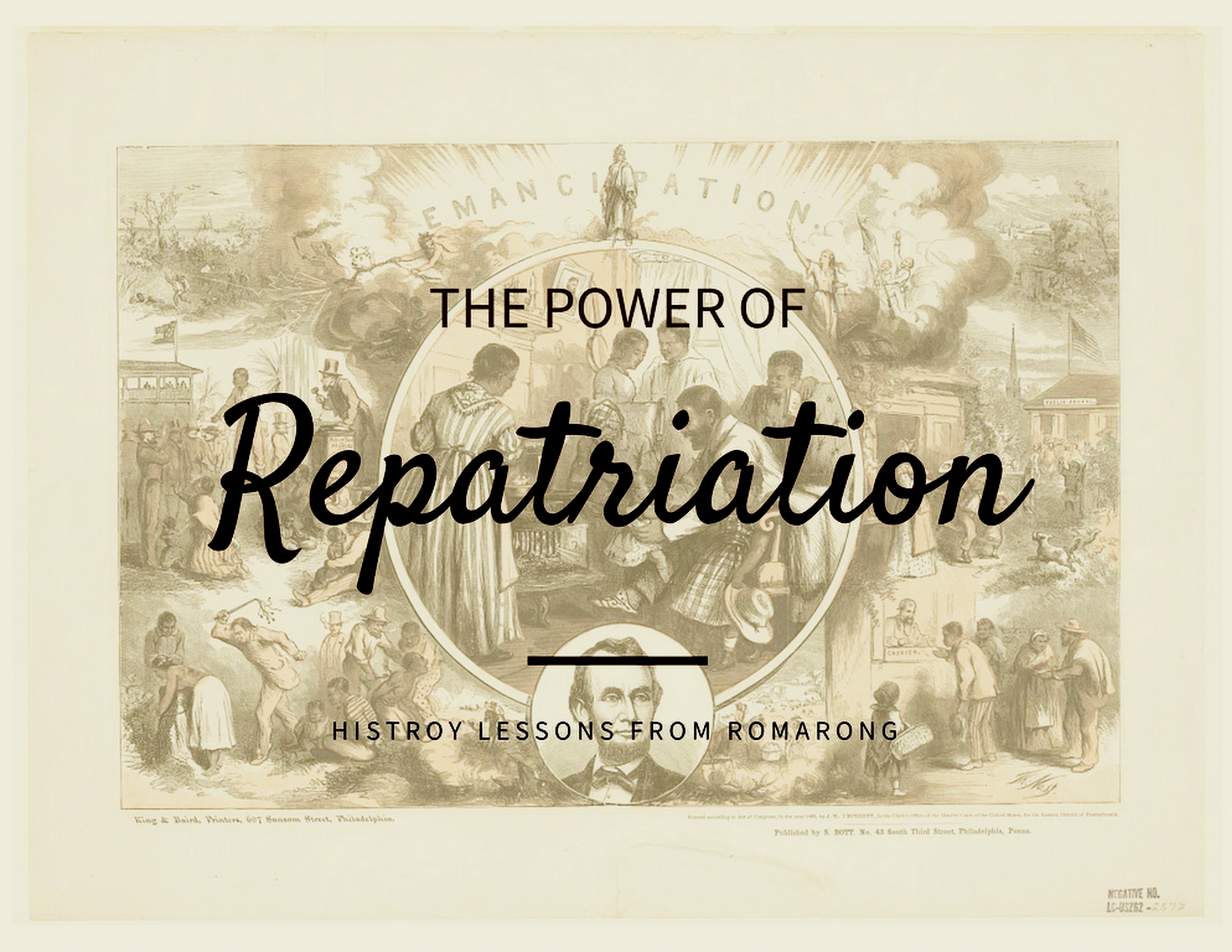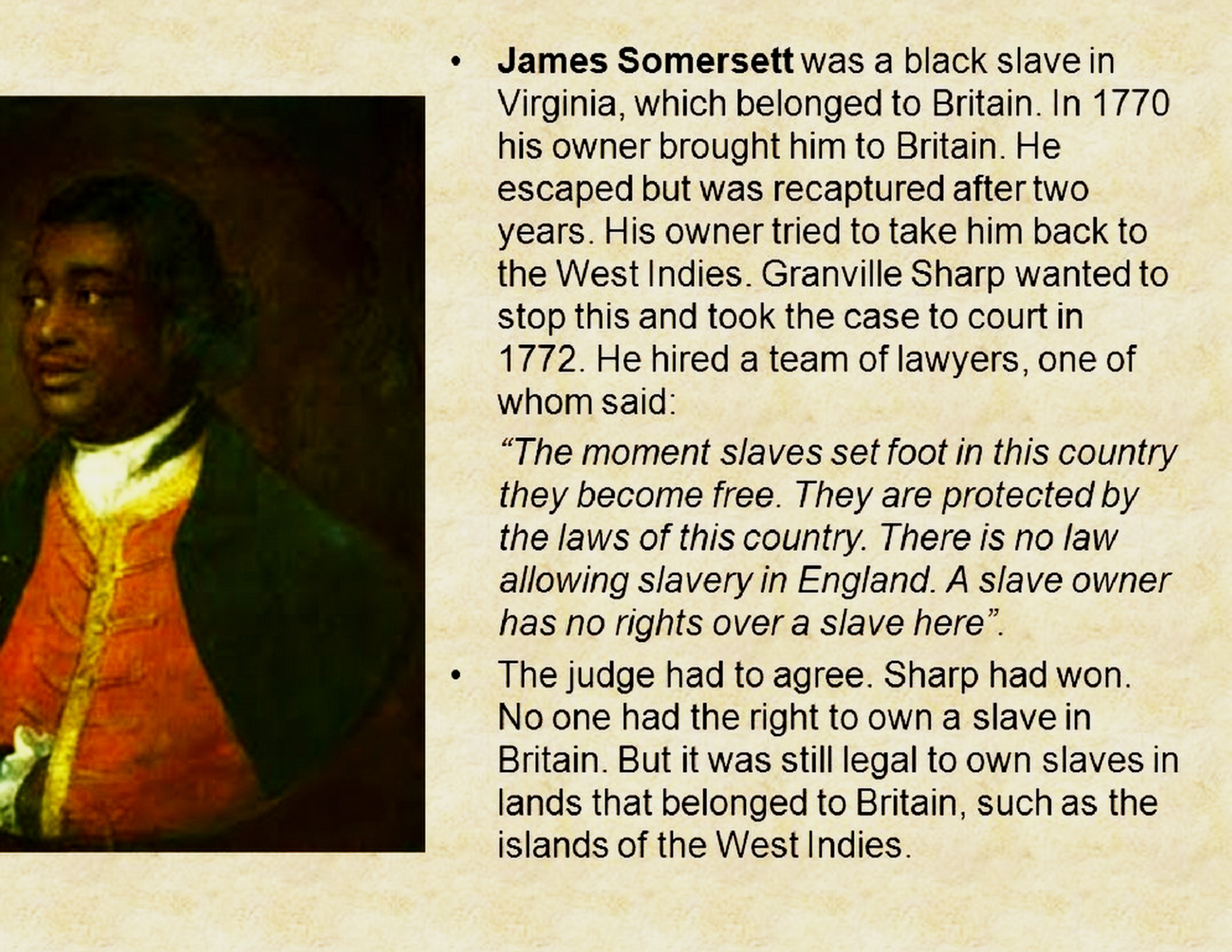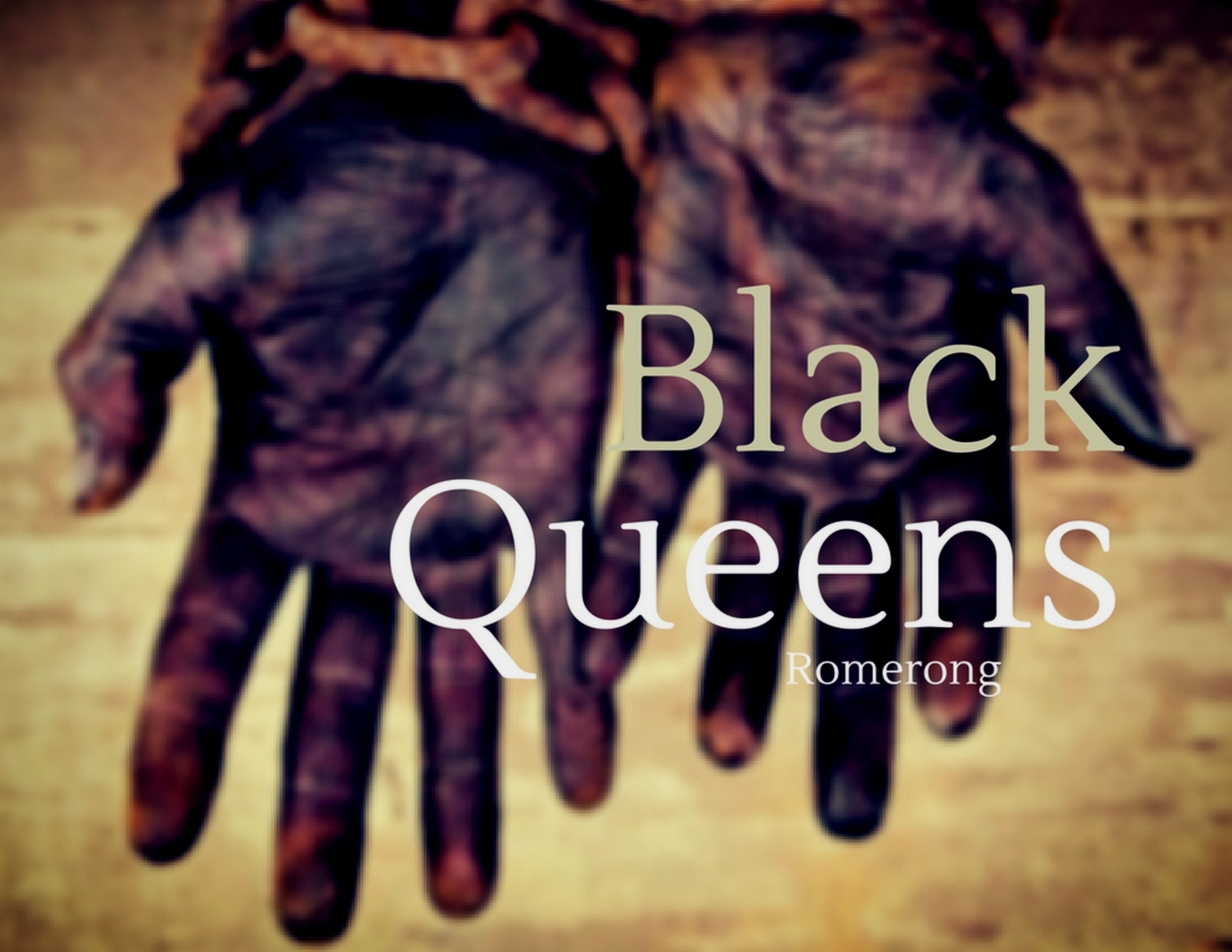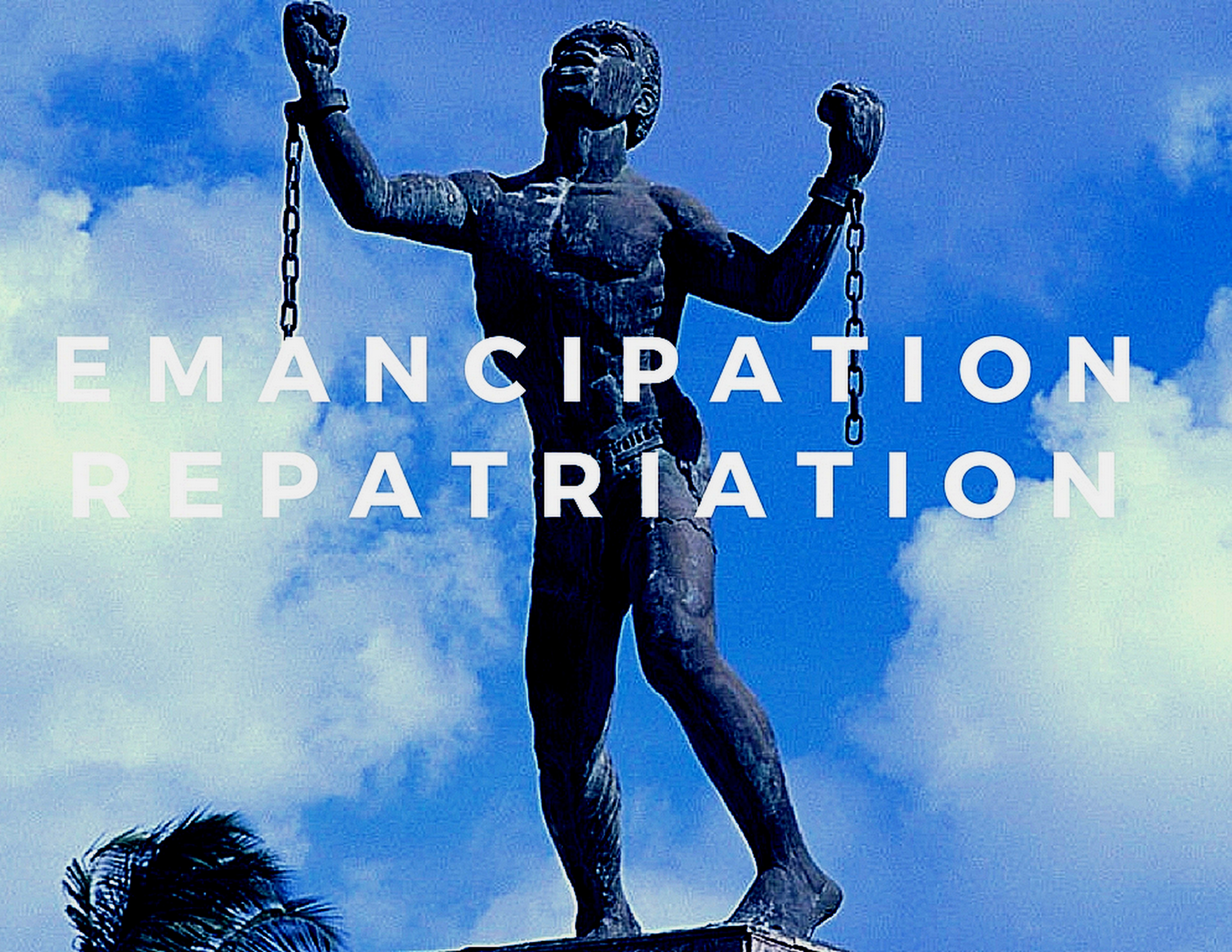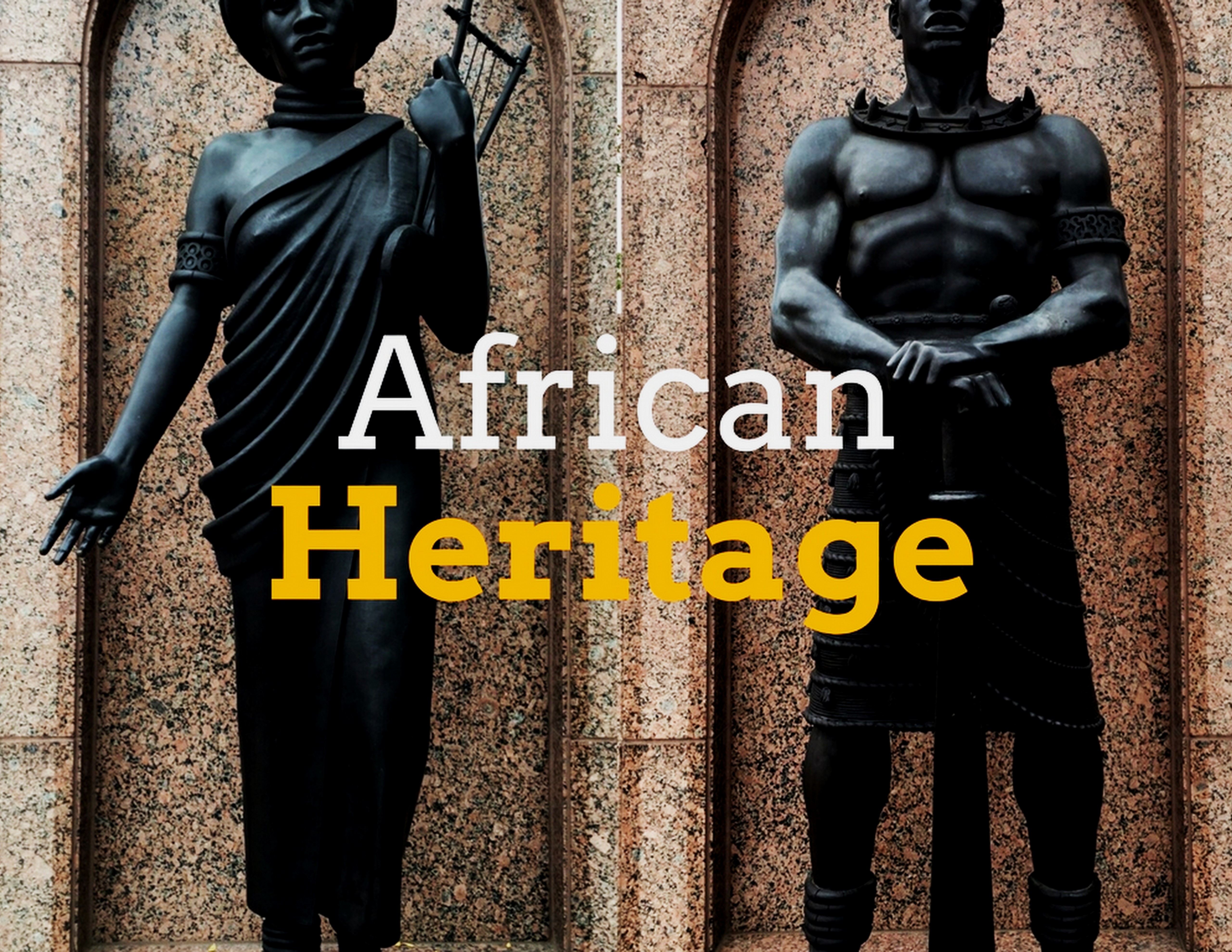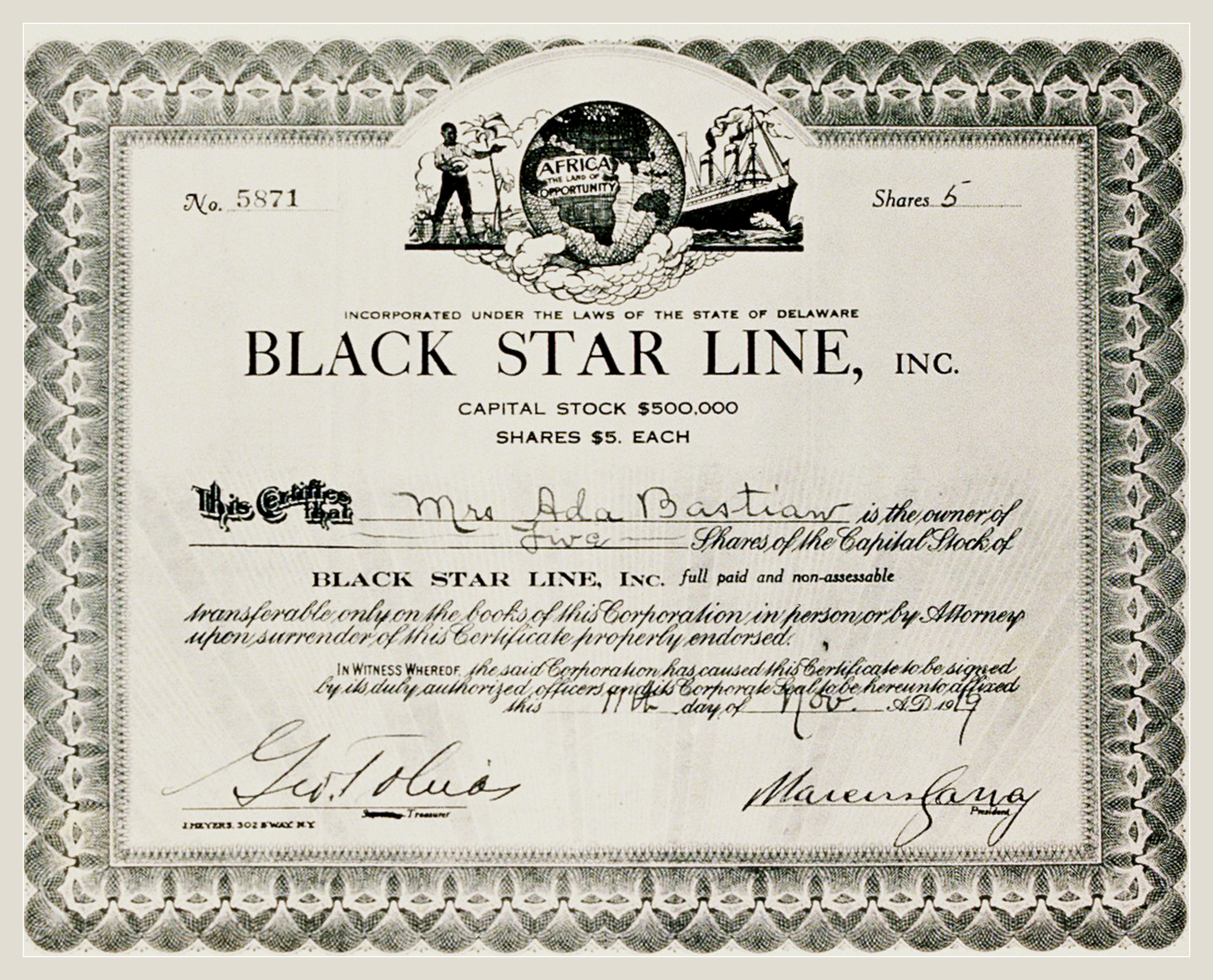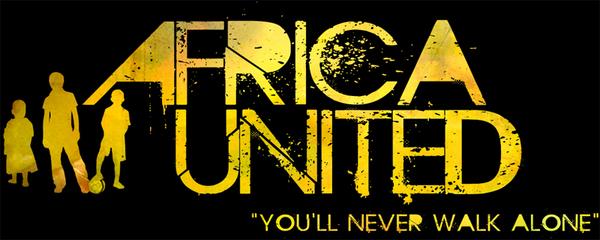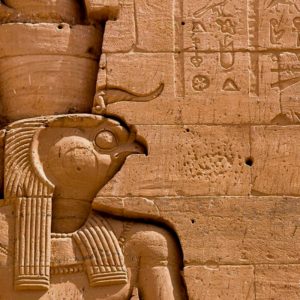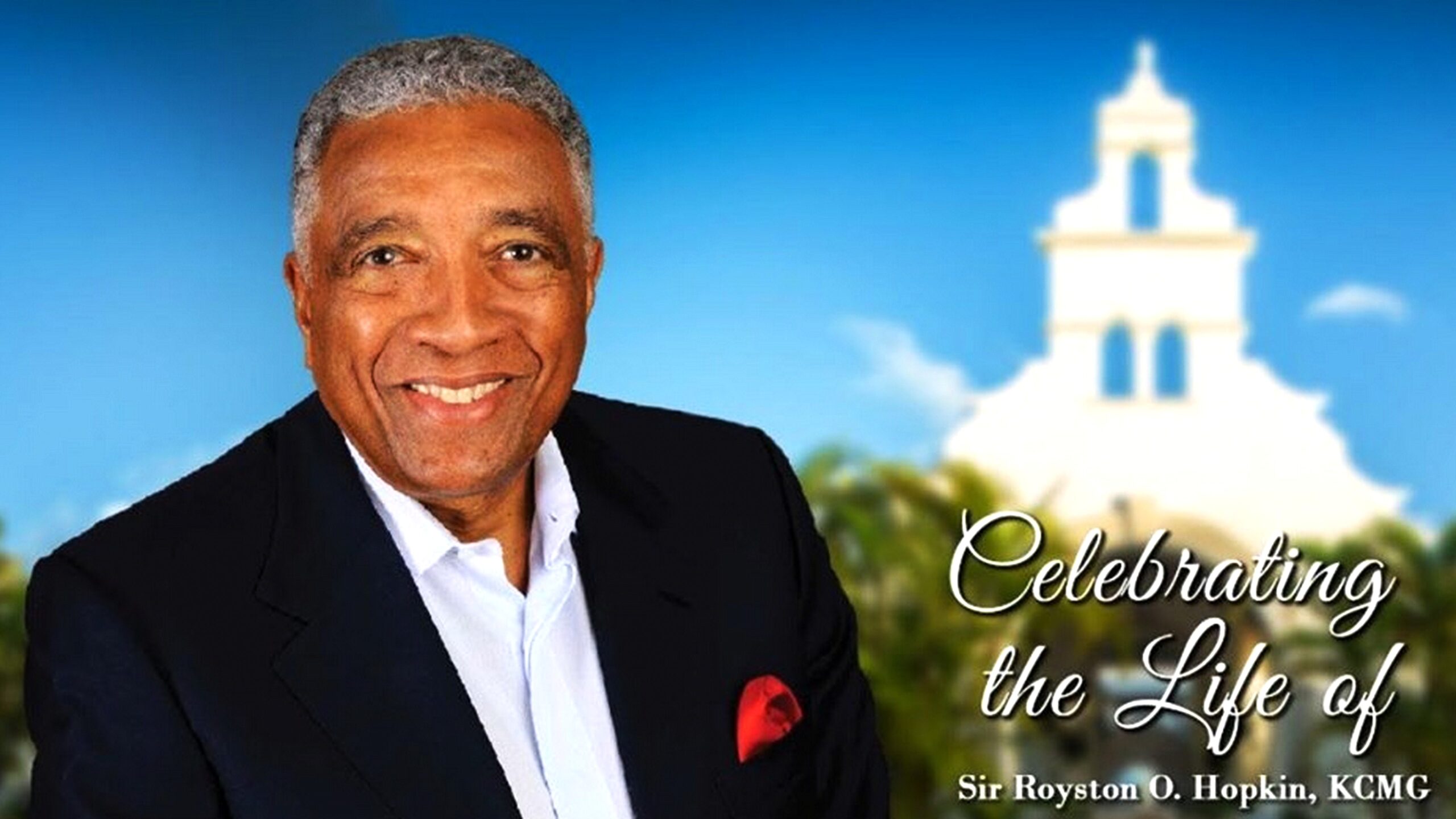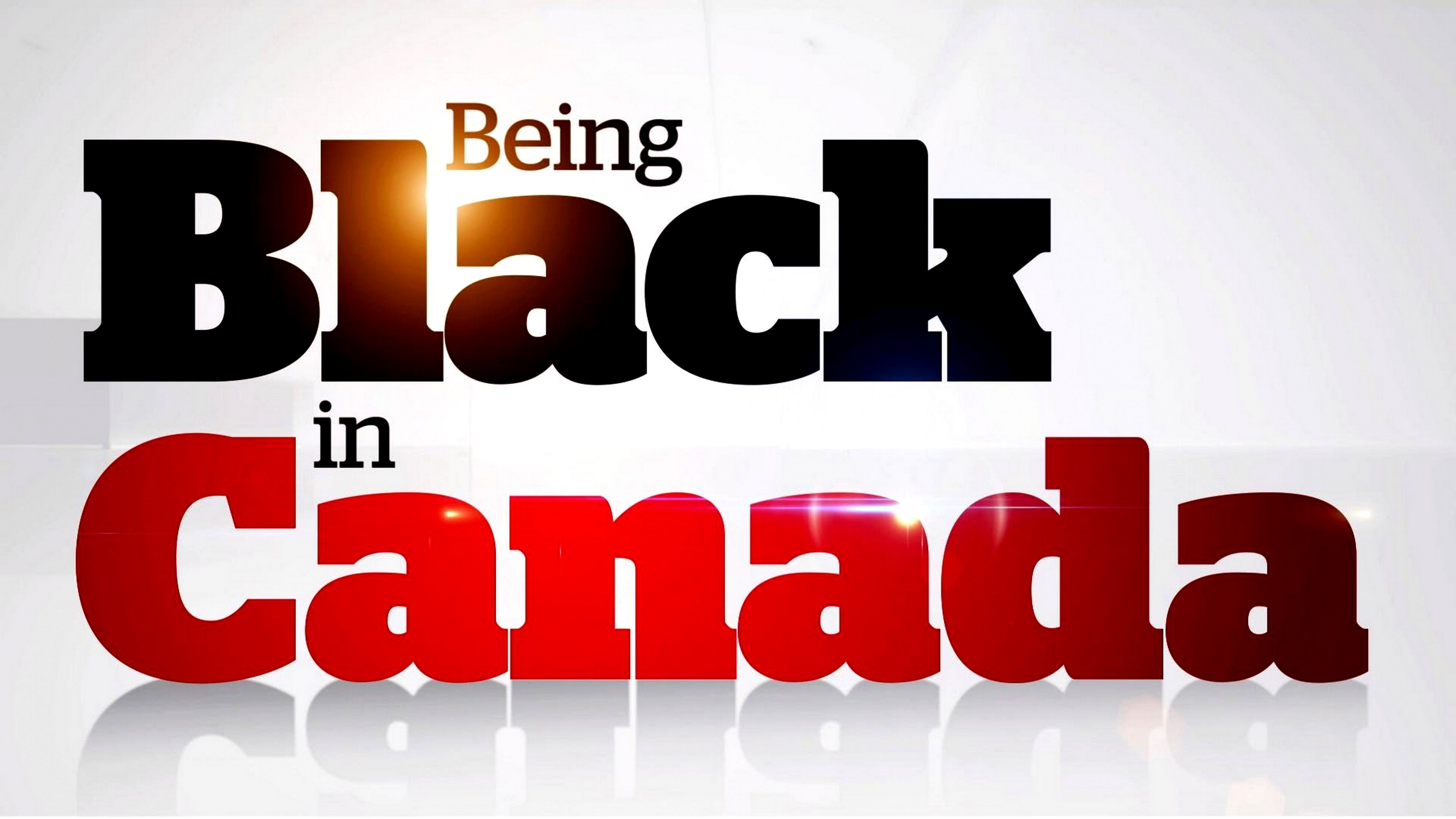For the most part, the United States, Great Britain, and France enslaved West Africans. Religious groups and abolitionists launched demonstrations charging that slavery was a crime against humanity. That tumultuous historical moment ended after the global effort for some Blacks to return to Africa. Despite that, many Whites still supported slavery. Many who benefited from it did not want to give up their profits. Moreover, others were fanatics and bigots who could not have it any other way. Therefore they did not wish for the amalgamated Blacks to live among them.
Once they arrived in England, Somersett devised a plan and escaped…”
The James Somersett Case
More ferocity ensued when an enslaved person named James Somersett escaped from his enslaver. Somersett had been enslaved all of his life. He had become very influential among the people. Numerous people supported enslaved people in their ambition to be free. Although in those days, Boston, Massachusetts (his home state) was a British colony. And the law considered Somersett, a “bonafide property” of his master. Somersett was a slave to the British customs officer Charles Steuart, who resided in Boston. When Steuart returned to England, he didn’t release his slaves as they had expected.
Instead, he brought them to England to continue as his slaves. Once they arrived, Somersett devised a plan and escaped. The authorities launched a search to capture him. When they caught him, years of loyalty and service to his master did not count for anything. Steuart gave Somersett up for imprisonment aboard a slave ship in the short sugar cane plantations of Jamaica. At that time, Jamaica was where to abandon insubordinate enslaved people. Luckily, three people stepped forward on Somersett’s behalf. They were his White godparents. They filed a petition in the Court of King’s Bench in England.
Somerset’s Trial & Freedom
While Somersett languished in prison, people spread rumors, and the story caught media attention. The public challenged the legality of slavery since the government had amended the constitution. The British government had disenfranchised slavery in England and throughout the British Colonies. After much delay, the judge took the case went to trial. Somersett had overwhelming support from the press and the public by this time. A respected political activist named Granville Sharp also took an interest in the case. He launched a campaign against slavery and the slave trade. Consequently, the court found Somersett’s imprisonment unconstitutional. The judge summoned the captain of the ship to set him free.
Freedom, Amalgamation, or Repatriation
After more than a month of debating, the Chief Justice freed Somersett. The presiding Judge, Chief Justice Lord Mansfield, was the highest on the King’s Bench. Lawyers argued that Somersett’s capture was unconstitutional. Or his master did not have the authority to ship him off to slavery on a Jamaican plantation. Somersett’s case became crucial to the emancipation efforts at the time. It was the 1700s, and England had abolished slavery. By 1822, the “American Colonization Society” had endeavored to repatriate black Americans to Africa. Many Blacks who bought their freedom did not trust white people. They believed the amalgamation among them led to discrimination or a possible re-enslavement.
A political activist by the name of Granville Sharp also took interest in the case. He launched a campaign against slavery and the slave trade.”
Many Blacks opted for a complete departure from the land that enslaved them. They decided on the place where the slave traders acquired their ancestors. And that was Africa. They wanted guaranteed freedom; better yet, they wanted to return to their African roots. They wanted to live among their people. But the nagging issue was not knowing exactly where in Africa did their ancestors originate? Or to which ethnic group do they belong? Some would later become the Kongos of Liberia. Others became the Krios of Sierra Leone. Kongo and Krio are ex-slaves who forged languages from broken English, French, and Dutch. Later that year, the American Colonization Society went to West Africa and bought land close to Romarong, establishing Liberia as the first independent country in West Africa.
The Republic of Liberia
The formerly enslaved Americans fashioned their flag to the model of the American flag. They wrote a constitution very similar to that of America. Some of these ex-slaves were highly educated at the University of Philadelphia. Once they had their land, they fathom a Western type of government. After abolishing slavery, the Europeans turned their focus to colonization. The American government, on the other hand, had no interest. They never colonized any region of Africa. Unlike the European countries that appointed Governor Generals in Africa, the Americans allowed the formerly enslaved people to rule. It was Joseph Jenkin Robert’s responsibility to establish and govern Liberia. The original natives of Liberia came from the same places where the Romarong natives originated. Before then, Ivory Coast, Guinea, Sierra Leone, and Liberia were one place.
They fashioned her flag to the model of the American flag and wrote a constitution very similar to the American one.
These were among the people who migrated from Western Sudan through to the Fouta Djallon. Those people migrated east of Romarong, spreading inland and along the coast. They finally settled among indigenous natives who populated Liberia. Some ethnic groups had also come from Mali and the Sahara. Some of the tribes were there all along. Unlike other African countries, no colonial master would ever rule Liberia. Freed Blacks backed by the United States government dominated the country for over a hundred years. They repatriated there to form an Americo-Liberian state. In 1847, they declared independence from what they dubbed the Republic of Liberia.
Emancipation Proclamation
Nevertheless, British colonialists were eager to expand along the coast of the hinterlands. They did not want a neighboring “free state” ruled by Blacks. At that time, the colonial masters wanted Africans to think of themselves as inferior to govern themselves. The French devised the same strategy in the north of Guinea and the Ivory Coast, But in 1862, United States President Abraham Lincoln gave two new executive orders. The President emancipated all enslaved people as the US Army and Navy Commander in Chief. He specified that he would liberate every enslaved person within the Confederate States. And that is even if those States never return to the Union. The American Civil War ensued.
Many believed that those executive orders were his way to turn the Blacks against their slave masters so he would win the civil war.”
He cited the US Constitution as the grounds for this decision. Many believed those executive orders were his way to turn the enslaved people against their masters. So they would join the Civil War and help him win. Some say the southern states wanted to leave the Union. They wanted slavery to continue. Among other ideas, many thought the abolition of slavery was the leading cause of the war. President Lincoln declared that by the following year, all slaves would be free. The states that had not opted for cessation from the Union he allowed to keep their slaves in the meantime. Every enslaved person wanted freedom. They were the descendants of a people who slave traders had captured or bought in Africa. They had also lost their culture and ethnic identity. Many of these people wanted to return to their motherland.
Slavery, War & Freedom
Now that freedom was on the horizon, the slaves were willing to give anything to grasp it. During that time, enslavers banned all Blacks from speaking African languages. They punished them for teaching their African culture to their offspring. They did not allow the enslaved people to learn to read and write. Slaver owners often broke up slave families by selling the one who could read. Many managed to learn how to read and write but kept it a secret. Some of them were more literate than enslaved people. If someone found out an enslaved person was literate, they would punish that enslaved person. WihMany Blacks escaped to Canada after the emergence of freedom and being eager to have space.
When the American Civil War erupted, some Blacks joined the US Army and played a significant role in causing the Union of States to defeat the Confederate States they could so they could abolish slavery. Any states not named under the Union in President Lincoln’s Emancipation Proclamation Act had their slaves removed from them and set free. They saw this act as a devastating economic blow to the Confederate States and, as viewed by some, a punishment for withdrawing from the Union of American states. Critics assessed that the Act only freed enslaved people in the Confederate, not those in the Union.
Moreover, Abraham Lincoln’s Act fueled the growing abolition movement which set the stage for the ultimate freedom of all slaves in the United States of America.”
Even though this move did not affect certain states within the Confederate States because they had rejoined the Union or were in the process of rejoining the Union, more than 20 000 enslaved people were freed under the Emancipation Proclamation Act. Most of those enslaved people ended up being the first Krios in Romarong. Moreover, Abraham Lincoln’s Act fueled the growing abolition movement, which set the stage for the ultimate freedom of all enslaved people in the United States of America. Notably, they ultimately set even those enslaved in the Union States.
This became a very contentious issue among the enslavers in the north because they, too, wanted the continuation of the business of slavery. Those that accepted the abolition of slavery did not wish to have four million Blacks living among them. This is where racism and segregation started, where discrimination found its foothold. For years to come, white Americans would discover crafty methods to encrypt the system with glitches that restrained Blacks and kept them regulated to impoverished locales and undeveloped neighborhoods.
Furthermore, creating intangible roadblocks prevents them from amalgamating as bonafide equals among the whites. In the 1800s, this prompted many enslaved people to relocate to parts of the country where slavery no longer existed, and discrimination and segregation did not wholly dwindle their self-worth. Slavers still enslaved some Blacks in the Confederate and Union States even after President Lincoln declared the Emancipation Proclamation Act. The government set forth The Proclamation, but the officials did not enforce it immediately.
Blacks had grown fed up with slavery and yearned for freedom to come quicker. Many could not wait for the law to be fully enforced in their state. Some turned to crime and murdered their master with his entire family. Others joined a repatriation program and were among the first to be returned to Africa. At the slightest opportunity to escape, a group of enslaved people would slip away under darkness to relocate to another part of the country. The civil war raged on when the army moved south to reclaim it. As the forces recovered from the south, numerous enslaved people were freed. Towards the end of the civil war in America, almost every slave was free from the sheds of slave row. Chains and shackles removed, their backs no longer swelled from the overseer’s whip.
t the slightest opportunity to escape, a group of slaves would slip away, under the cover of darkness, to relocate to another part of the country.”
A new dawn was on the horizon. Black people were enslaved no more. However, in this further dawn, segregation, and discrimination were born. Some whites viewed Blacks as equals – that the color of one’s flesh does not define the moral of their character. Some whites were sympathetic to the black struggle and assisted, even as some Blacks betrayed fellow Blacks into slavery. Discrimination and segregation were now being fought against. Slavery was abolished in 1833 in England with the installment of the Slavery Abolition Act. A British philanthropist named William Wilberforce helped form the Committee for the Abolition of the Trans-Atlantic Slave Trade in 1787 and set forth to challenge British authorities to end slavery in England and within the entire British Empire.
James Somersett’s case fueled the movement against slavery in British colonies, where slavers had sold an estimated ten million Blacks, East Asians, and Indians as domestic enslaved people or plantation workers. Though Blacks were the majority of enslaved people held in England and Scotland, there were also enslaved people from East Asia and India at the time. These enslaved people were shuffled among the British, who often migrated to their colonies in North America and throughout the Caribbean. After James Somersett won his well-publicized case, the legality of slavery became increasingly questionable even as enslavers remained reluctant to let go of their flesh business.
In the mid-1800s, British Lords decided to abolish the Slave Trade in all their colonies, including the northern American states, Canada, the Caribbean, and even the United Kingdom. The freed slaves intended to rebuild Africa into what they saw as a new civilization. Still, West Africa comprised mostly of indigents who were the descendants of several dispensations of ancient ancestors. Many despised the world that had enslaved them and yearned for a return to the motherland – a motherland that still consisted of chieftaincies spawned from the gold, salt, and kola nut trade. They despised any western culture or ideology.
They worked with philanthropists like Wilberforce and other activists and abolitionists like Thomas Ramsay and Granville Sharp…”
They were the ones who, apart from Islam and Christianity, could not be converted to any new standard of living, especially if it threatened to deviate them from their shared belief, rituals, or culture. William Wilberforce’s Committee for the Abolition of the Trans-Atlantic Slave Trade cited human rights violations in trading enslaved people and inhumane treatment. By the late 1800s, many Blacks who had won their freedom had also gained a higher education. They worked with philanthropists like Wilberforce and other activists, abolitionists like Thomas Ramsay and Granville Sharp, and religious protagonists like the Quakers or the Clapham Sect of Evangelical reformers to proliferate an anti-slavery movement.
The movement grew fast, including some of its members gathered information about the day-to-day running of the slave business and how inhumane it was. Those who were eligible joined the British Parliament and used that to push for an end to the centuries-long travesty. In 1807, the Slave Trade Act was passed by the British Parliament, plus slavery was legally banned throughout the British Empire.
Navy vessels patrolled the high seas and investigated any ship suspected of carrying human cargo. Those ships were fined a hundred pounds per enslaved person if any were found aboard. At this time, even as slavery had been outlawed by the British, the French were not part of the British colonies. Hence they continued to trade. They smuggled enslaved people from Africa along new routes. Furthermore, when confronted by the British Navy, they threw the Blacks overboard to avoid the fines imposed by the Royal Navy. The Royal Navy confiscated hundreds of slave ships at sea and freed tens of thousands of Africans.
In 1831 Sam Sharp, a highly educated ex-slave who had become a Baptist preacher, helped some slaves set forth a Christmas rebellion against their masters.”
In Africa, the British signed treaties with Kings who benefited from the slave trade, using those treaties to force them to desist from selling their natives to slave traders. The abolition movement, after successfully causing the end of the slave trade, turned its attention to the act of slavery. In 1823, an Anti-Slavery Society was formed. In 1831 Sam Sharp, a highly educated enclave who had become a Baptist preacher helped some enslaved people set forth a Christmas rebellion against their masters.
The slave trade had been abolished, but some enslavers refused to set their slaves free. On August 1, 1838, every enslaved person that lived in the British colony was emancipated. The British government paid twenty million pounds to enslavers in Trinidad (located in the Caribbean Islands) to cover their loss for releasing their slaves. However, no enslaved person was ever compensated for being enslaved. *
